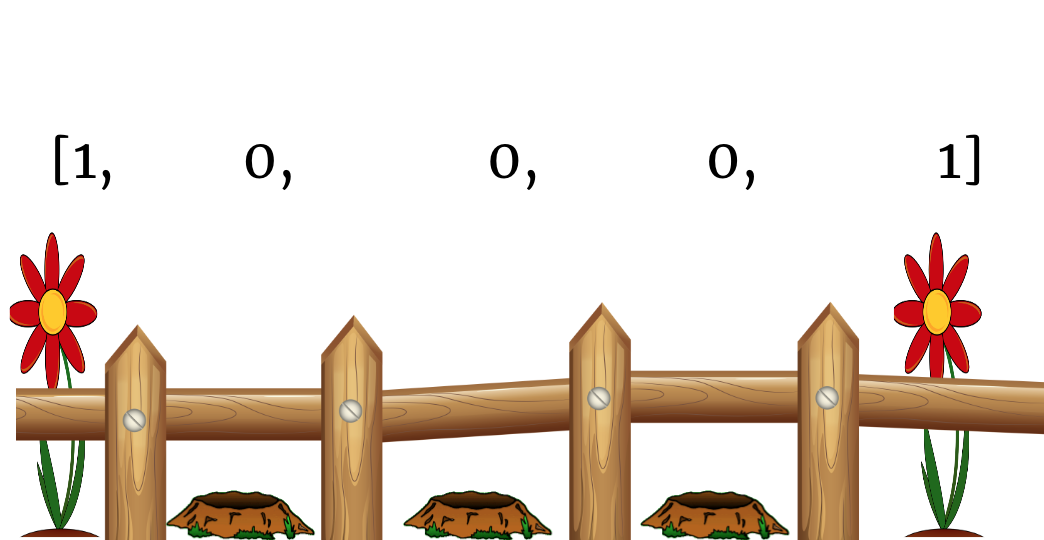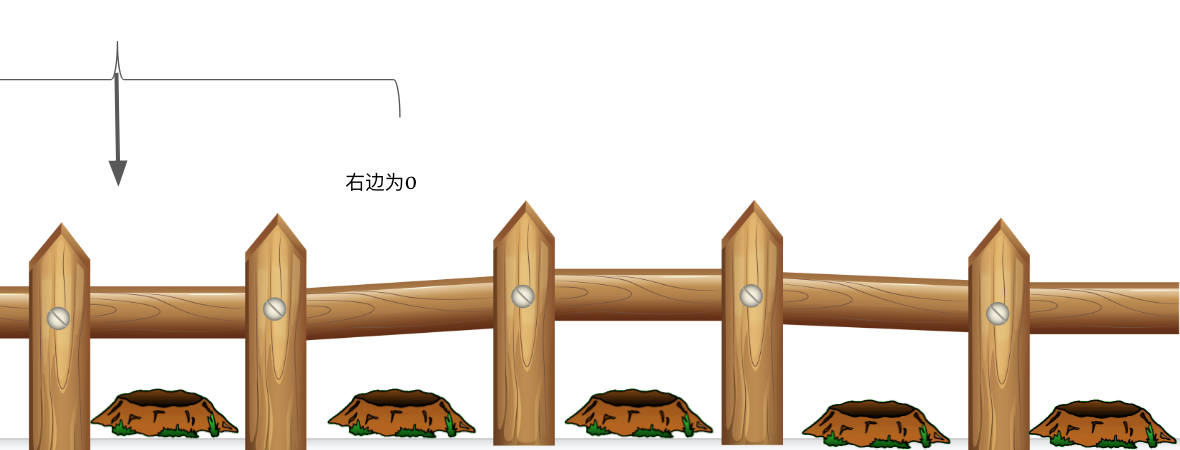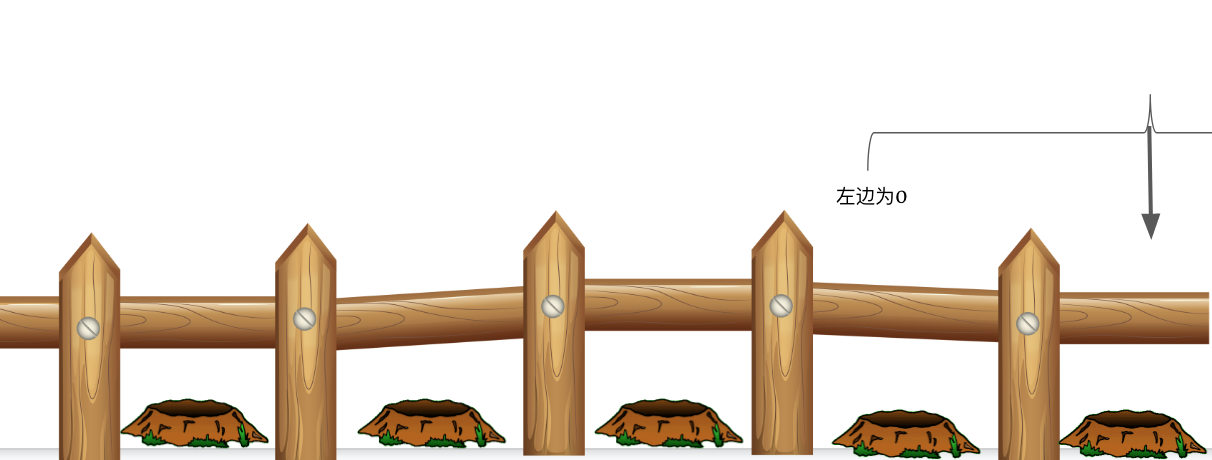Suppose you have a long flowerbed in which some of the plots are planted and some are not. However, flowers cannot be planted in adjacent plots - they would compete for water and both would die.
Given a flowerbed (represented as an array containing 0 and 1, where 0 means empty and 1 means not empty), and a number n, return if n new flowers can be planted in it without violating the no-adjacent-flowers rule.
Example 1:
Input: flowerbed = [1,0,0,0,1], n = 1
Output: True
Example 2:
Input: flowerbed = [1,0,0,0,1], n = 2
Output: False
Note:
- The input array won't violate no-adjacent-flowers rule.
- The input array size is in the range of [1, 20000].
- n is a non-negative integer which won't exceed the input array size.
题意:
给定一个花圃(1代表已种有花,0表示空), 规定花不能相邻。 问新来的n束花能否被种到该花圃。

Solution1: Greedy
扫给定数组,只要满足条件就插个1(种朵花), 直到n==0(新来花都种下了) 或者数组扫完。
明显的,扫到一个坑为0, 且其左边为0,右边为0, 该坑就可以种花

同时注意左右边界的特殊处理, (1)如果该坑为front, 且其右边为0, 该坑可以种花

(2)如果该坑为tail, 且其左边为0, 该坑可以种花

code
1 class Solution { 2 public boolean canPlaceFlowers(int[] flowerbed, int n) { 3 int i = 0; 4 while( i < flowerbed.length && n > 0 ){ 5 if (flowerbed[i]==0 && (i==0 || flowerbed[i-1]==0) && (i==flowerbed.length-1 || flowerbed[i+1]==0)){ 6 flowerbed [i] = 1; 7 n--; 8 } 9 i++; 10 } 11 return n == 0; 12 } 13 }




